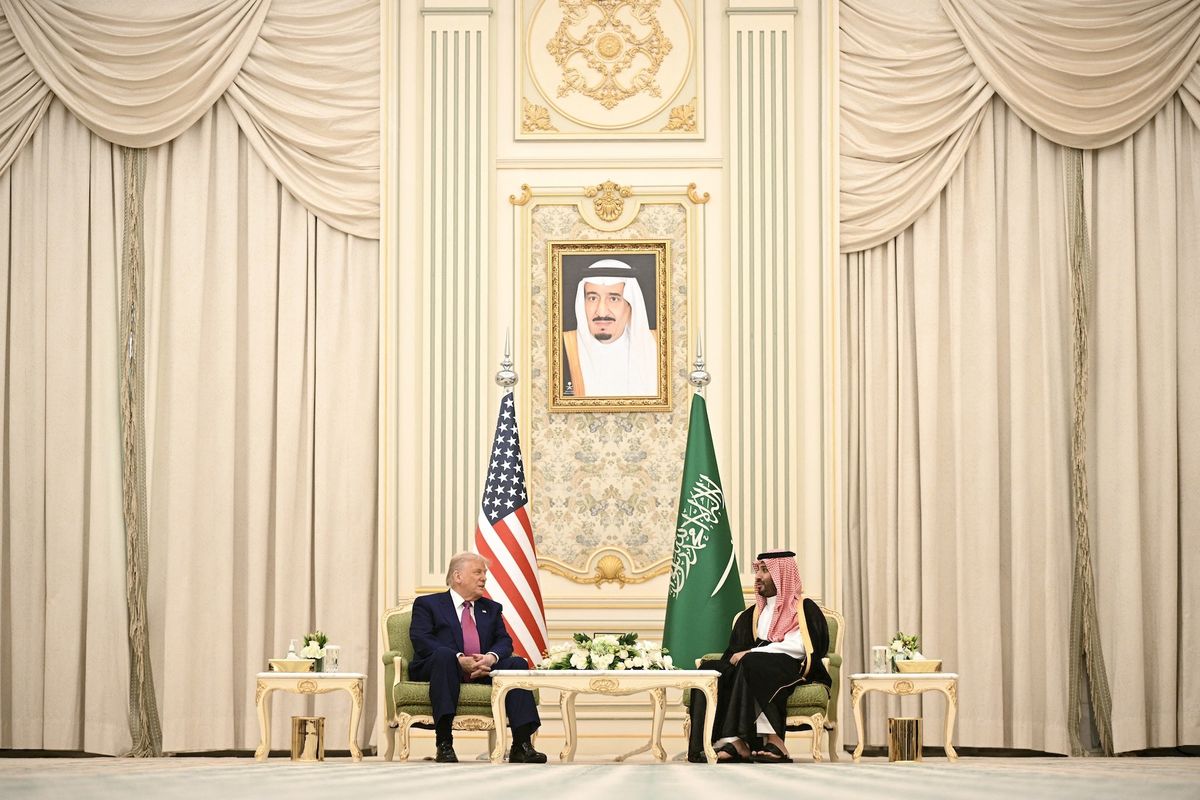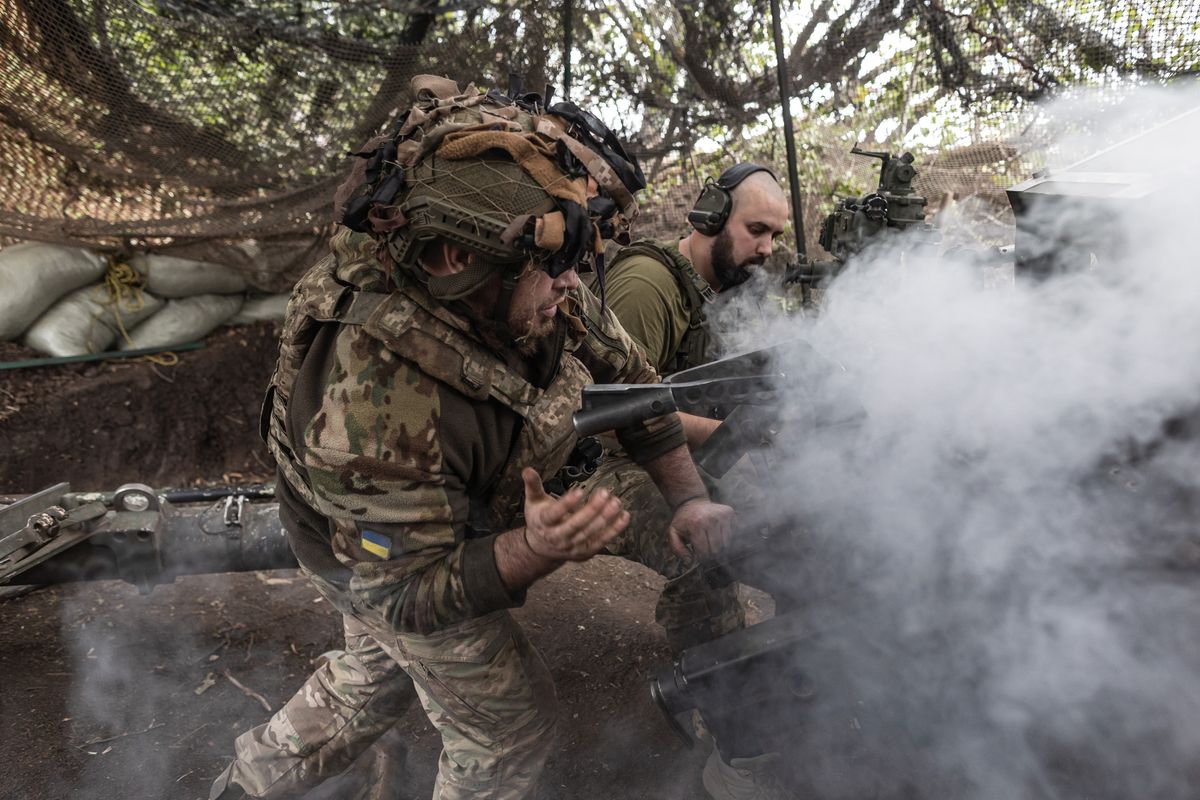OPINION — The “tremendous progress” with North Korea that President Trump has repeatedly claimed does not approach the success that Kim Jong Un has achieved, based on the status of negotiations as described by Trump’s own Special Representative for North Korea, Stephen Biegun.
Biegun said his meeting this week with his North Korean counterpart, Ambassador Kim Hyok Choi, is to plan for another Trump-Kim summit at the end of this month, during an appearance last Thursday at Stanford University. The purpose, he said, was to conclude “a roadmap of negotiations” going forward in “four streams of potential cooperation.”
They are, Biegun said, “Transforming our relations, building a permanent peace on the Korean Peninsula, denuclearization…and return of remains from the Korean War.”
“In President Trump,” Biegun said, “the United States has a leader who, more so than any previous president, is deeply and personally committed to once and for all bringing an end to 70 years of war and hostility on the Korean Peninsula.”
Biegun said that although the core of the negotiations was denuclearization, “we have a lot of other issues in the relationship that we need to resolve…We can resolve issues of disagreement outside of the weapons of mass destruction issue much more effectively through engagement than through the separation that we have right now.”
This is a far cry from the Trump administration’s initial positions for negotiations, such as National Security Advisor John Bolton’s Libya scenario, when all Kim’s weapons were to be quickly removed within a year in one sweep. It also does not reflect Trump’s subsequent call for a phased withdrawal of Kim’s nuclear weapons capabilities, which required the North Koreans to present at the outset, a comprehensive declaration of their nuclear facilities, fissile stockpile, weapons, missiles, and launchers.
Biegun said there have been pledges made in private conversations with Kim and other officials that North Korea was prepared to do away with its plutonium facilities at Yongbyon as well as other plutonium and uranium enrichment facilities, but “upon the United States taking corresponding measures.” Biegun said he plans to explore what those “corresponding measures” might be at the current, pre-summit negotiations.
Meanwhile, the Pentagon has suspended and/or lowered the level of U.S./South Korea military exercises and has eased the delivery of humanitarian assistance to North Korea.
In addition, Biegun said, “President Trump is ready to end this war [with North Korea]. It is over. It is done. We are not going to invade North Korea. We are not seeking to topple the North Korean regime.”
What Biegan outlined Thursday was almost exactly the terms of the April 2018 Panmunjom Declaration, signed between Kim and South Korean President Moon Jae-in, which proposed a separate step-by-step approach to bring the two countries closer together. One of the early steps involved meetings “involving the two Koreas, the United States and China with a view to declaring an end to the War, turning the armistice into a peace treaty, and establishing a permanent and solid peace regime.”
The very last step was to confirm “the common goal of realizing, through complete denuclearization, a nuclear-free Korean Peninsula.”
Although mostly ignored at the time, the June 18 joint statement that Trump signed at their Singapore summit with Kim included reaffirmation of that the Panmunjom Declaration, and thus indirectly Trump and the U.S. had agreed to Kim’s earlier roadmap “toward complete denuclearization of the Korean Peninsula.”
During his Stanford University presentation, Biegun restated that for denuclearization, “we must have a complete understanding of the full extent of the North Korean weapons of mass destruction and missile programs,” i.e. the aforementioned declaration. But, he added, even that step has been delayed. “We will get that at some point,” he said.
Biegan even indicated a modest support for what Director of National Intelligence Dan Coats told the Senate Intelligence Committee last week, that North Korea was not likely to give up its nuclear weapons. “North Korea has given us little indication that they have yet made the decision to completely dismantle and destroy that [weapons of mass destruction] capability,” Biegan said.
In fact, one key element still not clarified was a “detailed definition or shared agreement of what denuclearization entails,” he said. “We do need to have a shared understanding of what the outcome is going to be,” he said.
As an example of how limited progress has been, Biegun said that in the first five months since he took over his post, he had just one working-level meeting with his counterpart and that was just to plan for the meetings now taking place.
So, what’s the “tremendous progress,” Trump was referring to?
It turns out it remains North Korea’s April 2018, halt in tests of missiles and nuclear devices, plus the apparent destruction, pre-Singapore summit, of the Tongchang-ri missile engine and Punggye-ri nuclear test sites. Biegan described those sites as “not critical parts of the current North Korean missile or nuclear programs.”
Even returning the remains of U.S. military members has been limited. Last June, at a rally in Duluth, Minn., Trump said, “We got back our great fallen heroes, the remains sent back today, already 200 got sent back.” Last Thursday, Biegun said the North Koreans had returned only “55 sets of human remains” believed to be Americans who were killed in the war.
Meanwhile, here are a few facts to remember:
In his January 2017, New Year’s address, Kim said his country had “achieved the status of a nuclear power,” and would continue to “build up…the nuclear forces and the capability for preemptive strike…to defend the peace and security of our state.”
Later that year, on September 3, 2017, North Korea announced that it had tested a hydrogen bomb “that it said it was perfecting for delivery on an intercontinental ballistic missile,” according to a January 29, 2019, Congressional Research Service report. In addition, the Defense Intelligence Agency has estimated that North Korea has a stockpile of up to 60 nuclear warheads and it has continued to produce fissile material for weapons.
Trump responded in his September 19, 2017 speech at the United Nations, warning that the U.S. would "totally destroy North Korea" if it were forced to defend itself or its allies. Suggesting North Korea could not survive an American attack, he said, “Rocket Man is on a suicide mission for himself." Three days later, after Kim called him “mentally deranged,” Trump responded tweeting, Kim was “obviously a madman who doesn’t mind starving or killing his people.”
In the wake of a North Korean launch on November 29, 2017 of a test ICBM judged powerful enough to send a warhead to the U.S. east coast, Trump described Kim as “a sick puppy.”
In his January 1, 2018 New Year’s Day speech, Kim spoke of the achievements of his nuclear weapons program. He referred to “a nuclear button on the desk of my office” and said that “all of the mainland United States is within the range of our nuclear strike.”
Trump’s response on January 2, 2018 was a tweet in which he said, “Will someone from his depleted and food starved regime please inform him that I too have a Nuclear Button, but it is a much bigger & more powerful one than his, and my Button works!”
However, another aspect of Kim’s 2018 New Year’s Day speech called for the North and South to come together to reduce tensions on the Korean peninsula, a move that led to the announcement in April 2018 of a freeze on further North Korean nuclear and missile tests.
Trump, however, likes to claim, as he did on CBS’ Face the Nation on Sunday, that “before I became President, it looked like we were going to war with North Korea.” President Obama during their transition meeting warned President-elect Trump that North Korea would be his most challenging foreign policy problem, but the former President never made any warlike threats as Trump has repeatedly done.
Trump, over the past year, appears to have made a total reversal in his view of “Little Rocket Man” and that could be dangerous to U.S. interests. “I like him,” Trump said Sunday of Kim. “I get along with him great. We have a fantastic chemistry. We have had tremendous correspondence that some people have seen and can’t even believe it. They think it’s historic. And we’ll see what happens. Now that doesn’t mean we’re going to make a deal, but certainly I think we have a very good chance.”
As Ronald Reagan often said, “Trust but verify.”
Read more from Walter Pincus' Fine Print....













